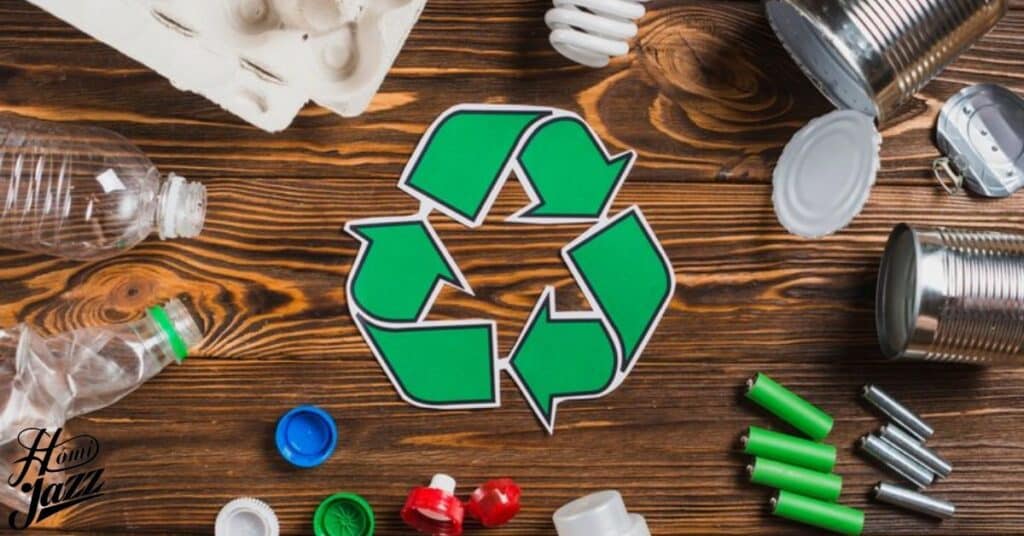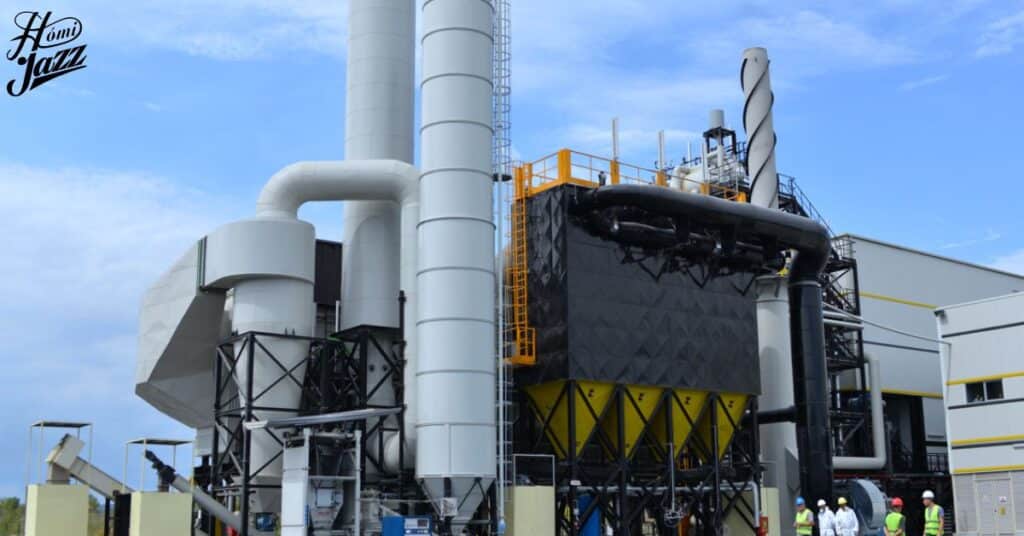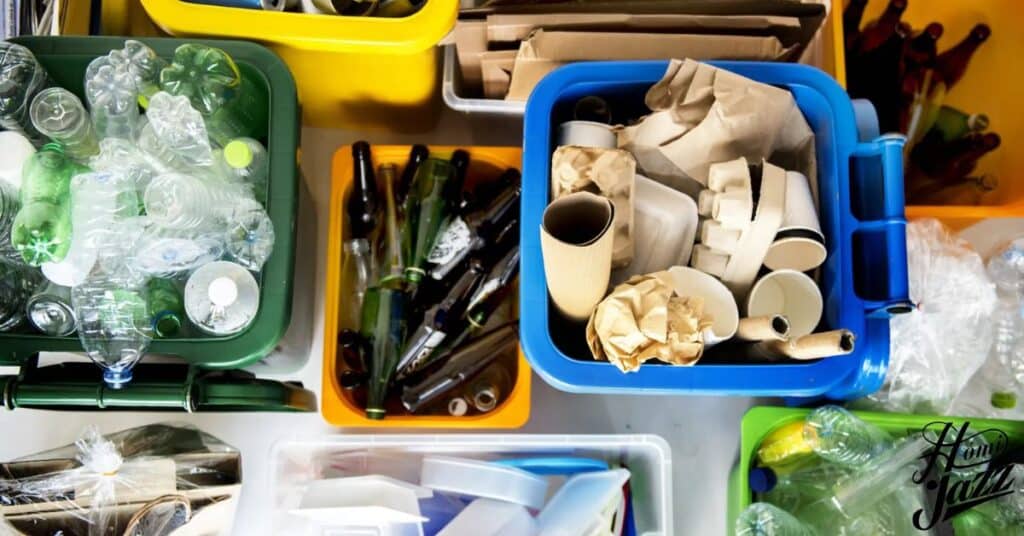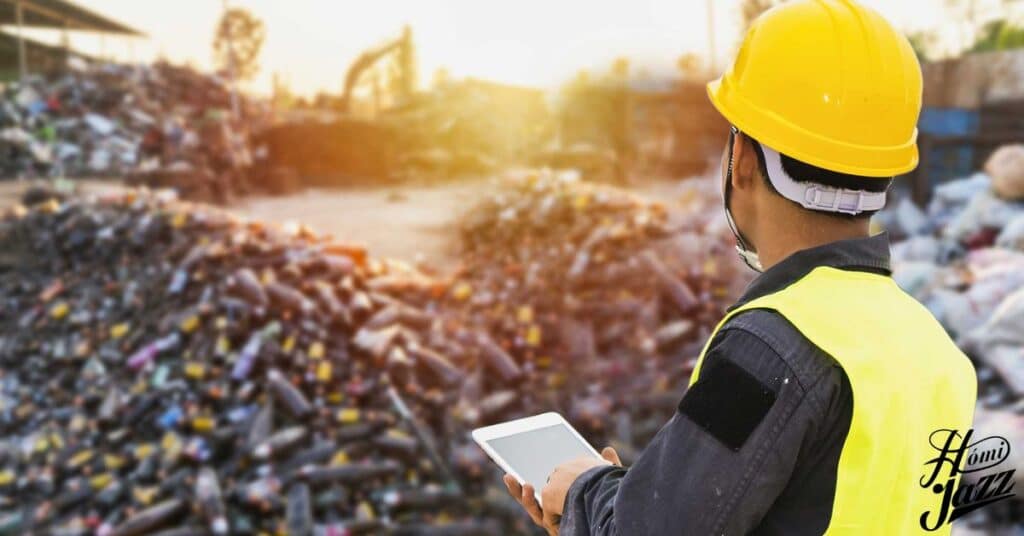Recycling waste is crucial for protecting our planet and conserving valuable resources. In today’s world, where environmental concerns are paramount, recycling offers a practical solution to minimize waste and promote sustainability.
Understanding the five main methods of recycling waste is essential for individuals and communities alike. These methods encompass various processes to transform used materials into new products, contributing to a cleaner and greener environment. Let’s explore these methods further to learn how each one plays a vital role in waste management and environmental preservation.
Five types of recycling

Recycling waste involves turning used materials into new products instead of disposing them in landfills or polluting our oceans. There are five methods of recycling, each focusing on different materials and processes:
1. Paper Recycling
Paper recycling is the process of reusing paper and paper-based products to make new items. First, used paper is collected from homes, offices, and businesses. Then, it’s sorted based on types and quality. After sorting, the paper is cleaned to remove any contaminants like ink or dirt.
Next, the cleaned paper is shredded into small pieces and mixed with water to create pulp. The pulp is then filtered and pressed to remove excess water, forming thin sheets of paper. Finally, these sheets are dried and rolled into large rolls or cut into smaller sheets for reuse. Paper recycling helps save trees, reduces energy and water usage, and minimizes waste going to landfills.
2. Plastic Recycling
Plastic recycling involves the process of converting used plastic materials into new products. First, plastic items are collected from homes, businesses, and recycling centers. Then, they are sorted based on their resin codes, which indicate the type of plastic. After sorting, the plastics are cleaned to remove any contaminants like dirt or labels.
The cleaned plastics are shredded into small pieces or melted down into pellets. These pellets can then be used to manufacture a variety of new plastic products. Plastic recycling helps reduce the demand for new plastic production, conserves resources, and minimizes plastic pollution in our environment.
3. Glass Recycling
Glass recycling involves collecting used glass containers and transforming them into new glass products. First, glass items like bottles and jars are collected from homes, restaurants, and recycling centers. Then, they are sorted by color to ensure purity during the recycling process. After sorting, the glass is cleaned to remove any impurities like labels or caps.
In the next step, the cleaned glass is crushed into small pieces called cullet. The cullet is melted down in a furnace and molded into new glass products such as bottles, jars, or fiberglass. Glass recycling conserves resources, reduces energy consumption, and prevents glass waste from ending up in landfills or polluting the environment.
4. Metal Recycling
Metal recycling is the process of reusing metals by collecting discarded metal items such as cans, appliances, and construction materials. These items are sorted and cleaned to remove contaminants like paint or insulation.
Then, they’re melted down in a furnace to form molten metal, which is molded into new products. Metal recycling conserves natural resources, saves energy, and reduces greenhouse gas emissions compared to mining and processing raw metals. It also helps prevent metal waste from filling up landfills or polluting the environment.
5. Organic Waste Recycling
Organic waste recycling involves decomposing organic materials like food scraps, yard waste, and plant residues to create nutrient-rich compost. This process begins by collecting organic waste, which is then piled or placed in a compost bin or heap.
Over time, microorganisms break down the organic matter through a natural process called decomposition. This results in the formation of compost, a dark, crumbly substance that can be used to enrich soil and improve plant growth. Organic waste recycling reduces the amount of waste sent to landfills, decreases methane emissions, and promotes sustainable gardening and farming practices.
Incineration

Incineration is a waste disposal method that involves burning waste materials at high temperatures. This process reduces the volume of waste and converts it into ash, gases, and heat. The heat generated during incineration can be used to produce electricity or heat buildings.
It can also release pollutants into the air, depending on the type of waste burned and the efficiency of the incinerator. Proper management and monitoring are essential to minimize environmental impact and ensure safety.
Read this blog also: http://homijazz.com/what-kills-maggots-on-contact-effective-methods-to-eliminate-maggots/
Advantages of Recycling Waste
Conservation of Landfill Space: Recycling reduces the amount of waste sent to landfills, alleviating the pressure on limited landfill space and reducing the need for new landfill sites.
Preservation of Biodiversity: By reducing the demand for raw materials through recycling, habitats, and ecosystems are preserved, benefiting biodiversity and wildlife.
Promotion of Sustainable Consumption: Recycling encourages responsible consumption patterns by emphasizing the reuse and repurposing of materials, fostering a culture of sustainability.
Reduction of Water Pollution: Recycling minimizes the discharge of pollutants associated with raw material extraction and manufacturing processes, leading to cleaner waterways and aquatic environments.
Enhancement of Air Quality: By diverting waste from incineration and landfills, recycling helps reduce air pollution and the emission of harmful gases and particulates into the atmosphere.
Support for Renewable Energy: Recycling contributes to the overall sustainability of energy systems by reducing the demand for fossil fuels and supporting the development of renewable energy sources.
Promotion of Innovation: The recycling industry stimulates innovation in waste management technologies, materials science, and sustainable manufacturing processes, driving technological advancements and economic growth.
Global Environmental Benefits: Recycling initiatives contribute to global efforts to address environmental challenges such as climate change, deforestation, and habitat destruction, fostering international cooperation and solidarity.
Reduction of Environmental Degradation: By minimizing the extraction of raw materials and the production of new goods, recycling helps mitigate environmental degradation and ecosystem disruption associated with resource exploitation.
Empowerment of Communities: Recycling programs empower communities by providing opportunities for local employment, entrepreneurship, and skill development in the waste management sector, enhancing social cohesion and resilience.
Tips for Effective Recycling

Know Your Local Recycling Guidelines: Familiarize yourself with the recycling guidelines in your area to ensure you sort and dispose of materials correctly.
Rinse and Clean Containers: Before recycling, rinse out food containers and clean recyclables to prevent contamination and ensure they are accepted by recycling facilities.
Reduce, Reuse, Recycle: Prioritize reducing and reusing items before resorting to recycling to minimize waste generation and resource consumption.
Use Recycled Products: Support the recycling industry by choosing products made from recycled materials whenever possible, promoting a circular economy.
Educate Others: Spread awareness about the importance of recycling among family, friends, and coworkers to encourage widespread participation and environmental stewardship.
Reduce Packaging Waste: Opt for products with minimal packaging or packaging made from recyclable materials to reduce the amount of waste generated.
Participate in Community Recycling Programs: Get involved in community recycling initiatives such as collection drives, composting programs, or educational workshops to contribute to local sustainability efforts.
Frequently Asked Questions
What are the 5 methods of recycling waste?
The five methods of recycling waste include source reduction, material recovery, biological reprocessing, energy recovery, and environmentally conscious landfilling practices.
What are the 5 ways to solve waste disposal?
The five ways to solve waste disposal are source reduction, recycling, composting, waste-to-energy conversion, and proper landfill management.
How do we recycle waste?
We recycle waste by collecting, sorting, processing, and transforming materials into new products.
How to recycle plastic?
Plastic recycling involves collecting, sorting, cleaning, shredding, melting, and reforming plastic materials into new products.
Conclusion
Recycling waste is vital for protecting our environment and conserving resources. By employing methods such as source reduction, material recovery, biological reprocessing, energy recovery, and responsible landfill management, we can mitigate pollution and promote sustainability. Recycling not only reduces the strain on landfills but also conserves energy and reduces greenhouse gas emissions.
It encourages responsible consumption and fosters a culture of environmental stewardship. For recycling efforts to be successful, widespread participation and awareness are essential. Each individual’s contribution, no matter how small, can make a significant difference in preserving our planet for future generations. Let’s continue to prioritize recycling and embrace sustainable practices to build a cleaner, healthier, and more sustainable world

Howdy is behind this home blog, sharing personal stories, thoughts, and insights from daily life. I can dedicated to bringing you the latest trends, expert advice, and creative ideas to make your home the sanctuary you’ve always dreamed of. Whether you’re looking for DIY tips, home decor inspiration, home loans, rentals or renovations.







